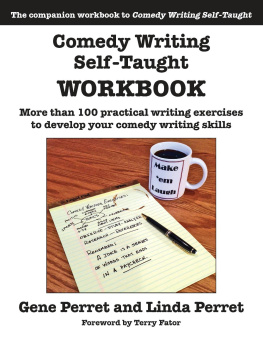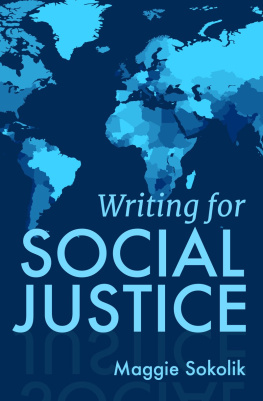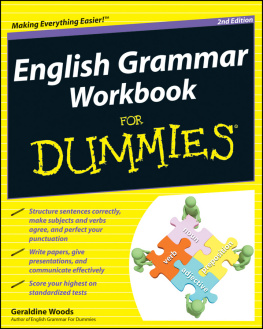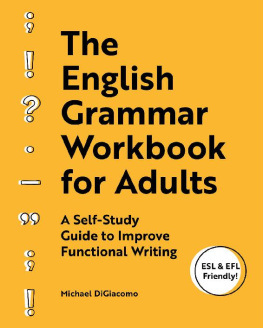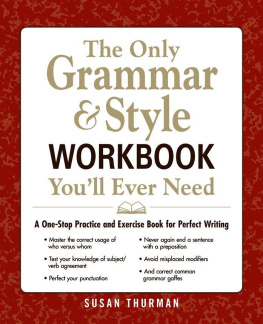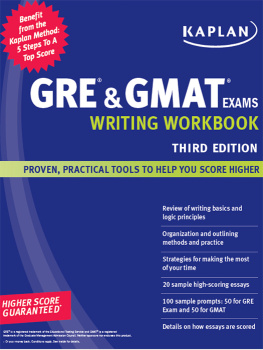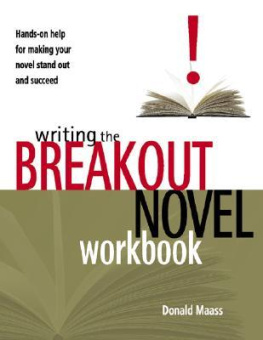Academic and Business Writing, Workbook 3
Copyright 2014 by Maggie Sokolik
All rights reserved. No part of this publication maybe reproduced, stored in or introduced into a retrieval system, ortransmitted, in any form, or by any means (electronic, mechanical,photocopying, recording, or otherwise) without the prior writtenpermission of the copyright owner. Dramatic works contained withinthis volume are intended only as reading material, and theirinclusion does not imply the granting of performance licenses,which must be arranged through the author.
Edited by Dorothy E. Zemach and Lida Baker. Coverdesign by DJ Rogers.
Published in the United States by WayzgoosePress.
Academic and Business Writing
Workbook 3
_____________________________
Maggie Sokolik
_____________________________

Introduction
This workbook accompanies the online course CollegeWriting 2.3x, Academic and Business Writing, the third of aseries of three courses offered by the College Writing Programs ofthe University of California, Berkeley and edX. This workbookoffers additional ways to practice writing, editing, and reviewingthe materials for the online course. It is not necessary to havetaken parts 1 and 2 to benefit from this course.
If you have purchased this workbook and are nottaking the course, you may still find use for the materials.However, because the course is offered free of charge, we recommendthat you look for the schedule on the http://edx.org websiteand join the live course. This will give you the opportunity tolearn along with other students from around the world.
Table of Contents
Chapter 1
Week 1: Introduction to Writing in theDisciplines
What is a Discipline?
An academic discipline is also called afield or area of study. In higher education, moststudents will choose a discipline in which to pursue in theirstudies. These disciplines arise out of centuries of history andways of education, but in fact, there is no formal way of definingwhat a discipline is or is not. Some disciplines are commonlyknown, and are found in nearly every university. For example, mostcolleges or universities include the study of mathematics, biology,economics, and history.
Many dozens of disciplines have been identified. Lookat this list from http://en.wikipedia.org/wiki/List_of_academic_disciplines_and_sub-disciplines .
Within a discipline are subdisciplines. For example,within history a student might focus on only Russian history; orwithin biology, on integrative biology.
Why does this matter?
Different disciplines, or groups of disciplines, havespecific expectations about writing within their field. Thesedifferences extend from ways of using research to the acceptablesyntax of a sentence. The sciences, for example, often favorpassive constructions rather than active ones, in order to keep thefocus of the written material on processes or substances, not onthe person performing the work.
Here are some of the disciplines that will be coveredin the course, as well as writing goals in each discipline and sometypical types of text.
Literature
Purposes for Writing
To learn from different literary texts
To show comprehension of different types novels,poems, and plays
Types of Writing
Essays
Summaries
Responses
Creative Writing
Purposes for writing
Experience different types of texts
Understand the forms of novels, short stories,poems, and plays
Express feelings and ideas in different ways
Types of Writing
Poetry
Short stories
Plays
Essays
Novels
Other types of creative writing
Sciences
Purposes for Writing
Express your understanding of scientificprinciples clearly and effectively
Describe experimental processes and results
Types of Writing
Essays
Research Projects
PowerPoint Presentations
Pre-Lab or Post-Lab Reports
Formal Laboratory Reports
Technology
Purposes for Writing
Learn to write with technical precision, withaccuracy and conciseness
Show effective use of visual data, such as tablesand figures
Report and document information correctly andaccurately
Types of Writing
Writing to accompany digital media
Technical writing
Instructions/procedures
Writing for the workplace
Social Sciences
Purposes for Writing
Think about current social issues
Examine your own social situation family, work,and community in the context of social sciences
Use your research imagination (social scienceperspective) to understand social problems and issues
Use a variety of media sources, including news,journals, the Internet, films, and literature
Become engaged in society through experientiallearning
Types of Writing
Essays
Research papers
Surveys
Slide presentations (PowerPoint, Keynote,Prezi)
Portfolios
Experimental reports
Professional Writing
Purposes for Writing
Communicate factual information to an identifiedaudience in a clear, direct manner
Defend or explain the language you used in yourwriting
Types of Writing
Case Studies
Business Plans
Marketing Plans
Business Correspondence
Letters and memos
Rsums
Email messages
PowerPoint Presentations
Remember, even if you are studying a particulardiscipline, it is important to learn how things are written inother disciplines so you can understand the world around you andread with expertise.
Different Types of Text
Every day, you probably deal with a variety of texts,and never really think about what makes them different from oneanother, except of course, for the contents of the writing.
Look at the three examples below. You can probablyidentify them without being told what they are. But how? Whatunique features or characteristics help you distinguish writing inone discipline from writing in another?
Example 1
In his own official report, Forrest makes no mentionof the massacre. He does make much of the fact that the Union flagwas not lowered by the Union forces, saying that if his own menhad not taken down the flag,few, if any, would have survived unhurtanother volley. However, as Jack Hurstpoints out and Forrest must have known, in this twenty-minutebattle, Federals running for their lives had little time to concernthemselves with a flag.
(Source: http://bcs.bedfordstmartins.com/resdoc5e/pdf/Hacker-Bish-CMS.pdf )
Example 2
William Butler Yeats wrote two poems that aretogether known as the Byzantium series. The first is Sailing toByzantium, and its sequel is simply named Byzantium. The formeris considered the easier of the two to understand. It containsmultiple meanings and emotions, and the poet uses various literarydevices to communicate them. Two of the most dominant themes ofthis poem are the desire for escape from the hardships of thisworld and the quest for immortality.
(source: http://www.roanestate.edu/owl/Deep.html )
Example 3
Desensitization (converse of secondarysensitization) is distinguished from habituation (converse ofprimary sensitization) by the explicit expression of memory reboundand recovery effects in the post-stimulation response. In the rat,desensitization of the vagally-induced Hering-Breuer reflex isabolished by lesioning the pneumotaxic center or systemicadministration of the noncompetitive NMDA receptor antagonistMK-801.
Next page


